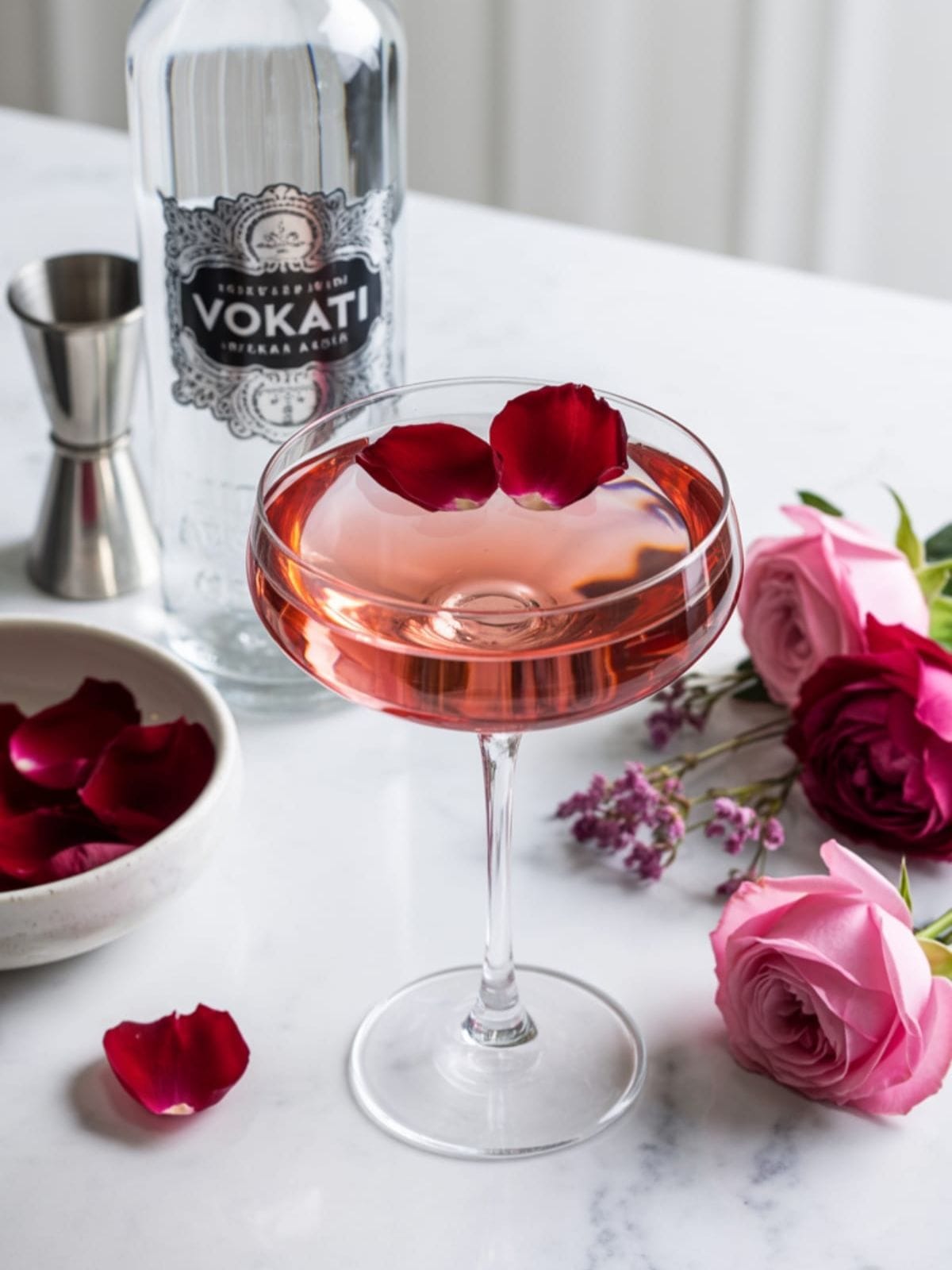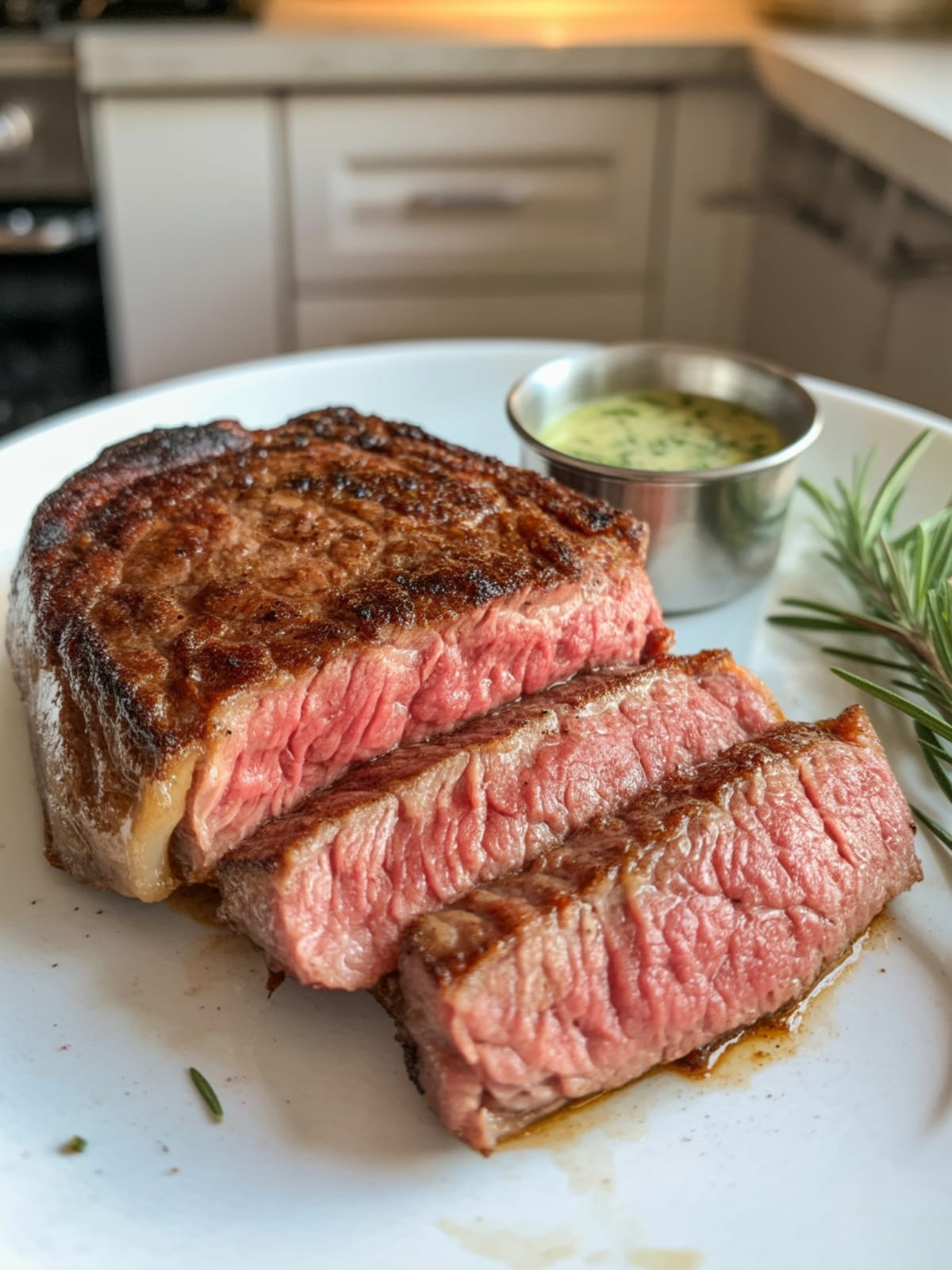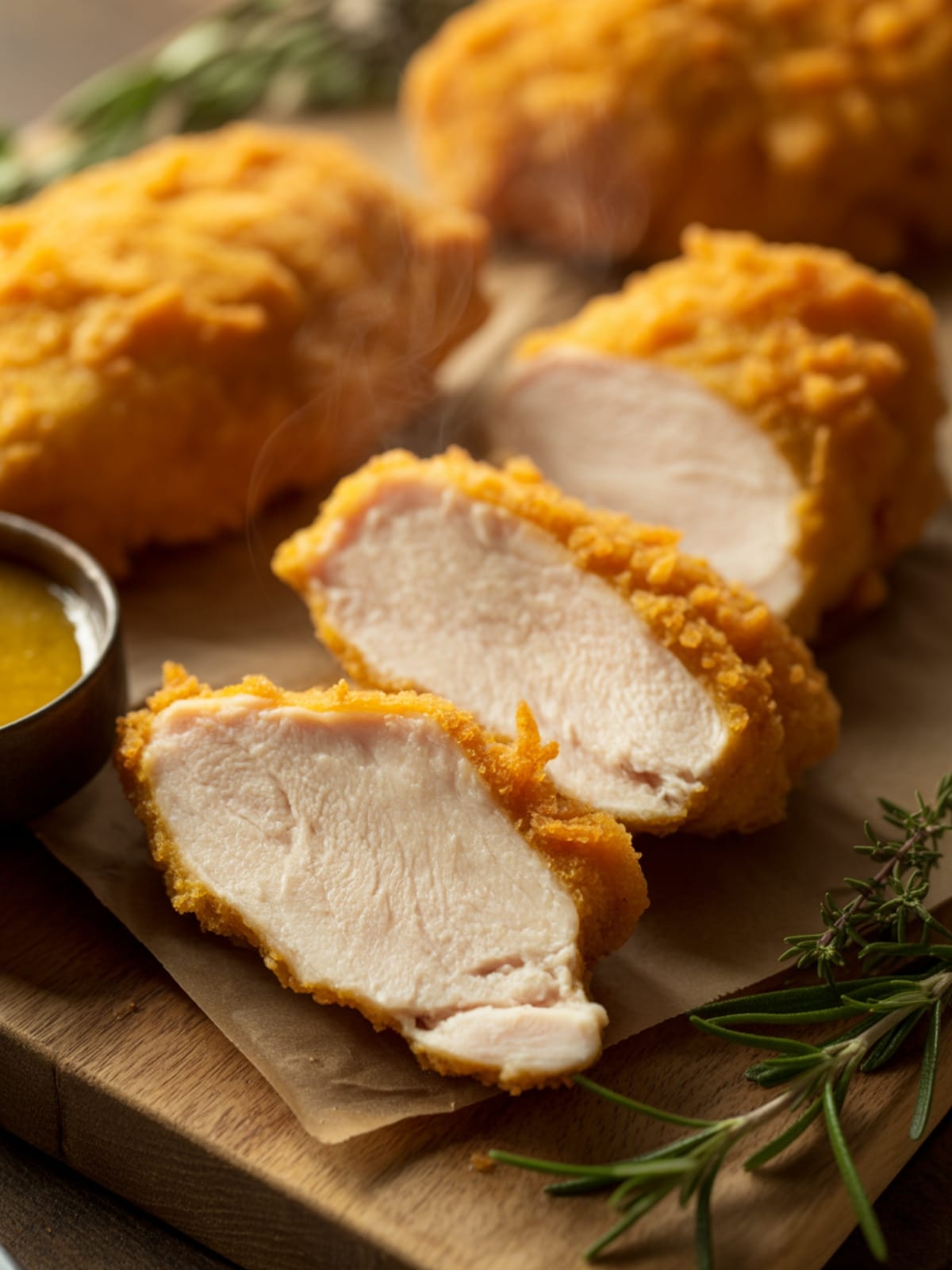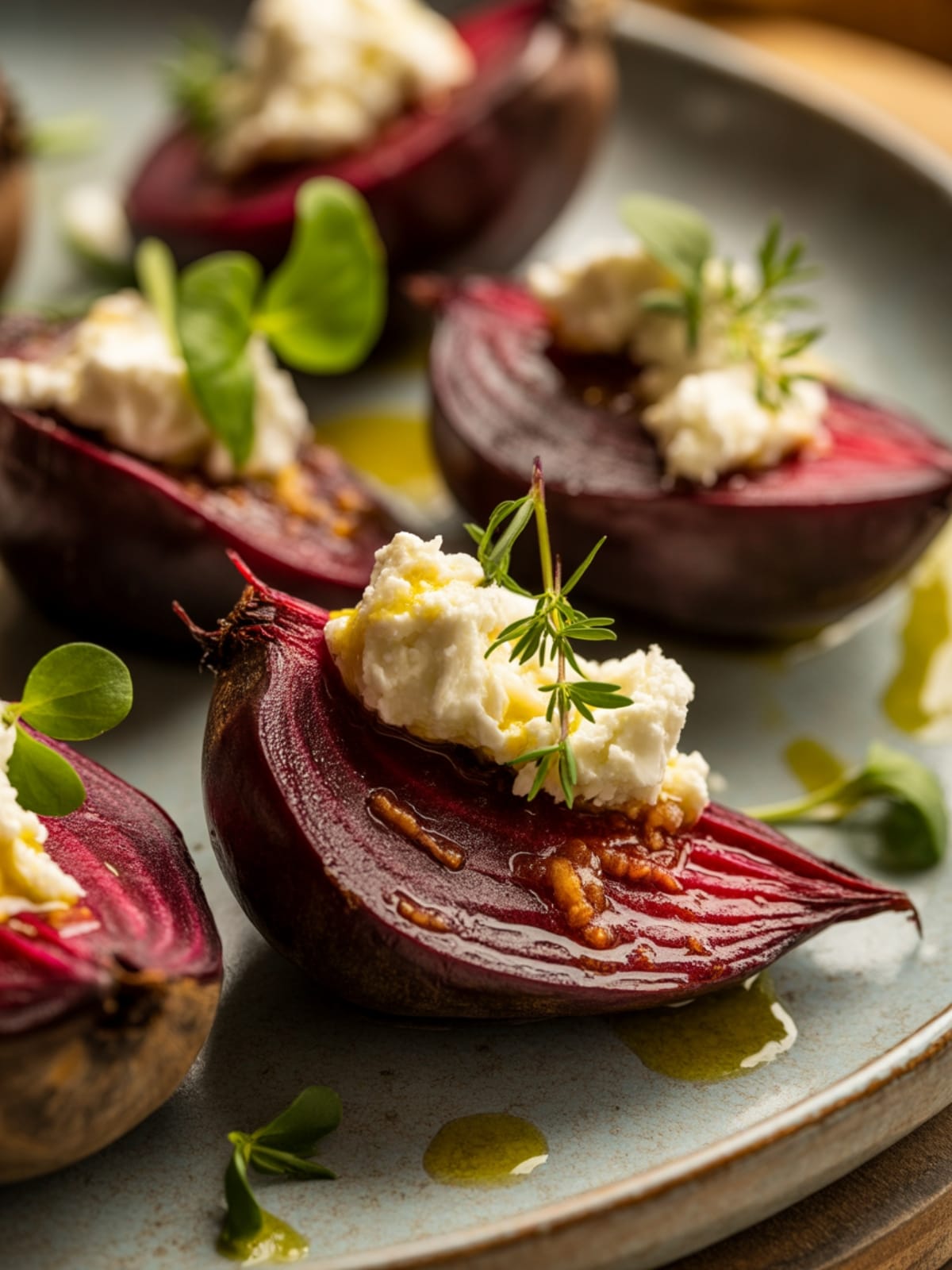There’s something undeniably romantic about sipping a Rose Petal Gin Martini. The delicate floral notes dancing with the botanical backbone of quality gin creates a cocktail that’s not just a drink—it’s an experience. This isn’t your standard martini; it’s what happens when classic sophistication meets garden-fresh elegance.
Whether you’re hosting a spring gathering or simply treating yourself after a long day, this rosy twist on a timeless favorite deserves a spot in your cocktail repertoire.
Why This Recipe is Awesome
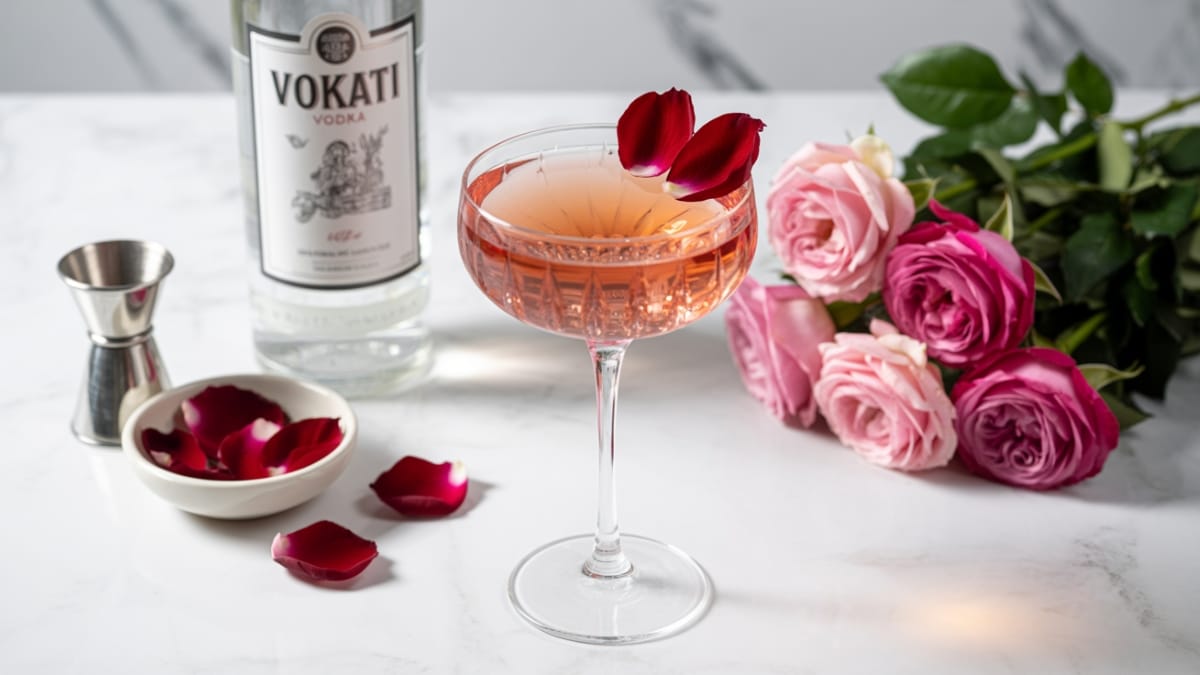
The Rose Petal Gin Martini stands out because it transforms the traditional martini into something unexpectedly aromatic without sacrificing its sophisticated edge. The subtle infusion of rose creates a sensory experience that engages both taste and smell, making it perfect for special occasions. What I love most is how this cocktail appears complex and impressive, yet requires minimal effort—just a few quality ingredients and a touch of finesse.
It’s the perfect balance between accessible and extraordinary, allowing even novice mixologists to create something that feels like it came from an upscale cocktail bar.
Equipment needed: Cocktail shaker, fine strainer, martini glass, measuring jigger
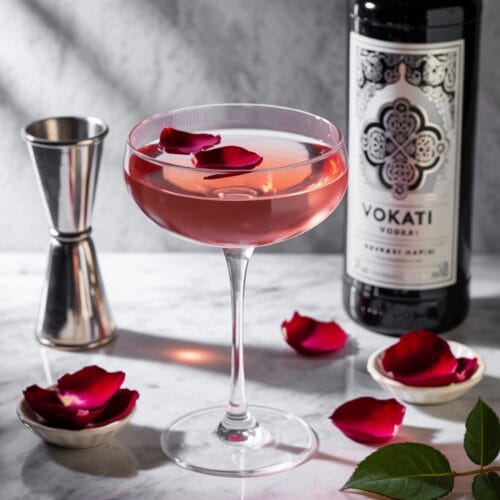
Rose Petal Gin Martini
Ingredients
- 2 oz premium gin London Dry works beautifully
- ½ oz dry vermouth
- ¼ oz rose syrup or rose liqueur like Lanique or Drillaud
- 3-4 fresh unsprayed rose petals, plus extra for garnish
- Ice cubes for chilling
- Optional: 1-2 drops rose water for enhanced aroma
- Optional: ½ tsp fresh lemon juice to brighten flavors
Instructions
- Prepare your glass first by chilling a martini glass in the freezer for at least 10 minutes. A properly chilled glass maintains the cocktail’s temperature and enhances the drinking experience.
- If time allows, infuse your gin by placing 2-3 clean rose petals in the gin for 30 minutes to 24 hours. This step is optional but adds depth to the floral notes. Strain before using.
- Fill your cocktail shaker with ice, ensuring it’s filled about ¾ full for proper dilution and temperature control.
- Add the gin, vermouth, and rose syrup to the shaker. If using, add the optional drop of rose water and/or lemon juice now. Measure precisely as rose flavors can quickly become overwhelming.
- Shake vigorously for 15-20 seconds until the outside of the shaker becomes frosty and cold to the touch. This proper dilution is crucial for a balanced martini.
- Double-strain the cocktail through a fine mesh strainer into your chilled martini glass to ensure no ice shards or petal fragments make it into the final drink.
- Garnish with a floating fresh rose petal or a small spray of petals along the rim. For extra visual impact, you can place the petal gently on the surface of the cocktail.
- Serve immediately while the cocktail is at its optimal temperature and the aromas are most vibrant.
Notes
- For a non-alcoholic version, substitute gin with a juniper-forward non-alcoholic spirit and use alcohol-free vermouth alternatives.
- Ensure roses are food-grade and haven’t been treated with chemicals or pesticides. Homegrown or culinary roses are best.
- For a deeper pink hue, you can add a tiny drop of natural pink food coloring or use a splash of cranberry juice.
- This cocktail can be batched for parties—multiply ingredients by the number of servings and store in a sealed container in the refrigerator for up to 2 hours before serving.
- The rose syrup can be made at home by infusing simple syrup with rose petals, or you can purchase it at specialty stores.
Calories & Nutritional Info
- Calories: Approximately 170-190 per serving
- Alcohol content: Approximately 25% ABV
- Carbohydrates: 5-8g (mostly from the rose syrup)
- Sugar: 4-6g
- Fat: 0g
- Protein: 0g
- Allergen notes: Generally allergen-free, though those with specific flower allergies should use caution
Common Mistakes to Avoid
- Overusing rose elements – Too much rose flavor can make your cocktail taste like perfume. Start with less and adjust to taste.
- Using non-edible flowers – Only use roses specifically marked as culinary-grade or that you’re certain haven’t been treated with chemicals.
- Skipping the proper chill – A room-temperature martini loses its crisp edge. Always chill your glass and shake properly with ice.
- Not balancing sweetness – Rose syrup adds sweetness. You may need to adjust vermouth or add a drop of lemon juice to maintain balance.
- Over-diluting – Shaking for too long will water down your cocktail. Aim for that 15-20 second sweet spot.
Alternatives & Substitutions
- Gin alternatives: Vodka creates a smoother, less botanical version. For a more aromatic twist, try using a floral gin like Hendrick’s.
- Rose syrup substitutes: If you can’t find rose syrup, dissolve a small amount of rose water (2-3 drops) in simple syrup, or use a floral liqueur like St-Germain (elderflower) for a different but complementary profile.
- Vermouth options: Bianco (white) vermouth adds more sweetness; extra-dry vermouth creates a more traditional, crisp finish.
- Color variations: Add a splash of pomegranate juice for a deeper ruby hue and tart undertone.
- Herbal additions: A single basil leaf or sprig of rosemary can complement the floral notes with an herbal dimension.
FAQs
How important is the quality of gin in a Rose Petal Gin Martini?
The quality of gin is crucial in a Rose Petal Gin Martini because there are so few ingredients to hide behind. A premium gin with balanced botanicals will complement rather than compete with the rose elements. London Dry styles typically work best, though gins with complementary notes like cucumber or other floral elements can create interesting variations.
Can I make this cocktail ahead of time for a party?
Yes, you can batch the Rose Petal Gin Martini up to 2 hours ahead of time. Combine gin, vermouth, and rose syrup in correct proportions in a sealed container and refrigerate. When ready to serve, pour into an ice-filled shaker, shake until properly chilled, and strain into chilled glasses. Add garnish just before serving to maintain freshness and visual appeal.
How can I ensure my rose petals are safe to consume?
For edible rose petals, source them from specialized culinary suppliers, farmers’ markets that sell edible flowers, or grow your own using organic methods. Never use roses from florists or garden centers, as these are typically treated with chemicals not safe for consumption. If growing your own, wait at least 2-3 months after planting before harvesting to ensure any pre-planting treatments have dissipated.
What’s the difference between using rose syrup and rose water in cocktails?
Rose syrup and rose water serve different functions in your Rose Petal Gin Martini. Rose syrup adds both sweetness and rose flavor, while rose water adds only the floral notes without sweetness and is much more concentrated. If substituting one for the other, use rose water very sparingly (just a few drops) and add simple syrup separately to maintain the cocktail’s balance.
Can I create a non-alcoholic version of this cocktail?
Absolutely! Create a non-alcoholic Rose Petal Gin Martini by combining a juniper-forward non-alcoholic spirit (like Seedlip Garden 108) with alcohol-free vermouth alternative (such as Lyre’s Dry Aperitif), rose syrup, and a splash of tonic water for complexity. The preparation method remains the same, and the rose garnish ensures you don’t lose any of the cocktail’s visual elegance.
Why is my cocktail turning out too perfumed or soapy tasting?
A soapy or overly perfumed taste typically indicates too much rose essence. Rose is incredibly potent and can quickly overwhelm other flavors. Start with half the recommended amount of rose syrup or rose water, then taste and adjust gradually. Additionally, adding a tiny splash of fresh lemon juice can help balance intense floral notes and prevent that soap-like quality.
What type of occasions is this cocktail best suited for?
The Rose Petal Gin Martini shines at spring and summer celebrations, wedding events, Valentine’s Day, or Mother’s Day gatherings. Its elegant appearance and aromatic profile make it perfect for sophisticated dinner parties, garden soirées, or afternoon tea-inspired cocktail hours. It’s particularly well-received at events where visual presentation and sensory experience are emphasized.
Final Thoughts
The Rose Petal Gin Martini is more than just a beautiful drink—it’s a conversation starter, a sensory delight, and a testament to how simple ingredients can create something truly special. Don’t be intimidated by its elegant appearance; with a little care and quality ingredients, you’ll create a cocktail that feels both sophisticated and deeply personal. Cheers to expanding your mixology horizons with this floral gem!
